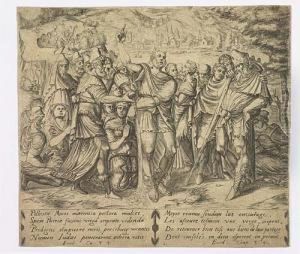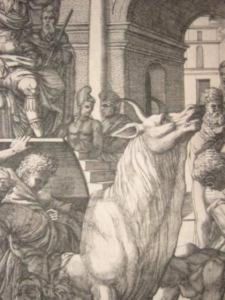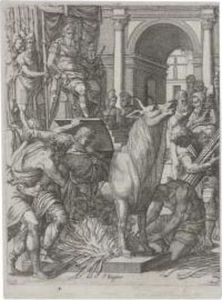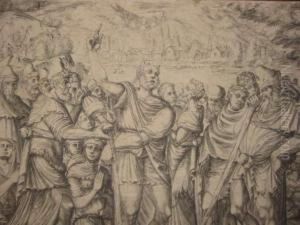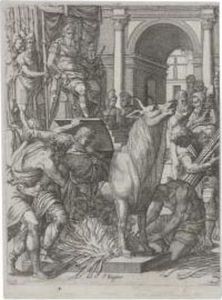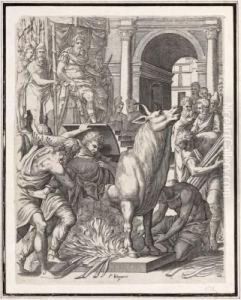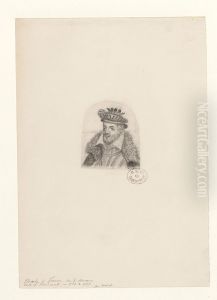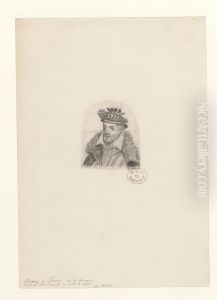Pierre Woeiriot Paintings
Pierre Woeiriot, also known as Pierre Woeiriot de Bouzey, was a French engraver, goldsmith, and medallist born in 1532 in Neufchâteau, Lorraine. Despite being less well-known than some of his contemporaries, Woeiriot was a significant figure in the Northern Mannerist style of the late Renaissance period. His work is characterized by intricate detail and elaborate ornamentation, common to the Mannerist aesthetic.
Woeiriot began his artistic career as a goldsmith and later transitioned to engraving. His skill as a goldsmith influenced his engravings, which often featured elaborate patterns and designs reminiscent of metalwork. He became particularly noted for his portrait engravings, which were highly regarded for their detail and the skillful rendering of textures and fabrics. His subjects included prominent individuals of his time, such as scholars, nobles, and members of the clergy.
Throughout his career, Woeiriot produced a substantial body of work, including religious scenes, allegories, and mythological subjects, along with his portraits. He also engraved decorative plates and jewelry designs, reflecting his background in goldsmithing. His engravings were widely disseminated, contributing to the spread of the Mannerist style across Europe.
Woeiriot's legacy is somewhat obscured by the scarcity of biographical details and the overshadowing fame of other artists of his era. Nonetheless, his engravings remain valuable to art historians and collectors for their technical prowess and as a reflection of the artistic trends of the late 16th century. Pierre Woeiriot de Bouzey passed away in 1599, leaving behind a body of work that continues to be studied and appreciated for its contribution to the art of engraving.
